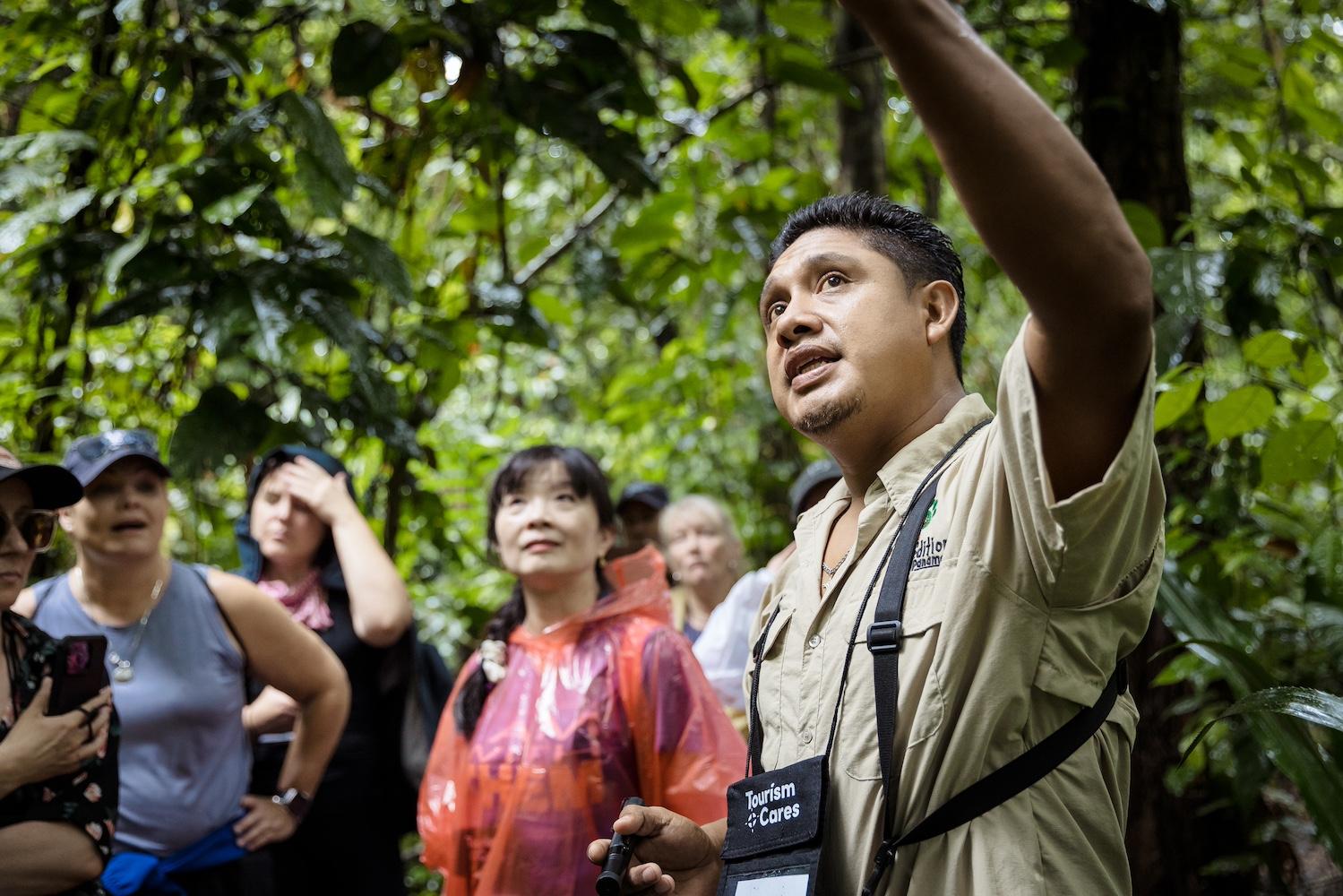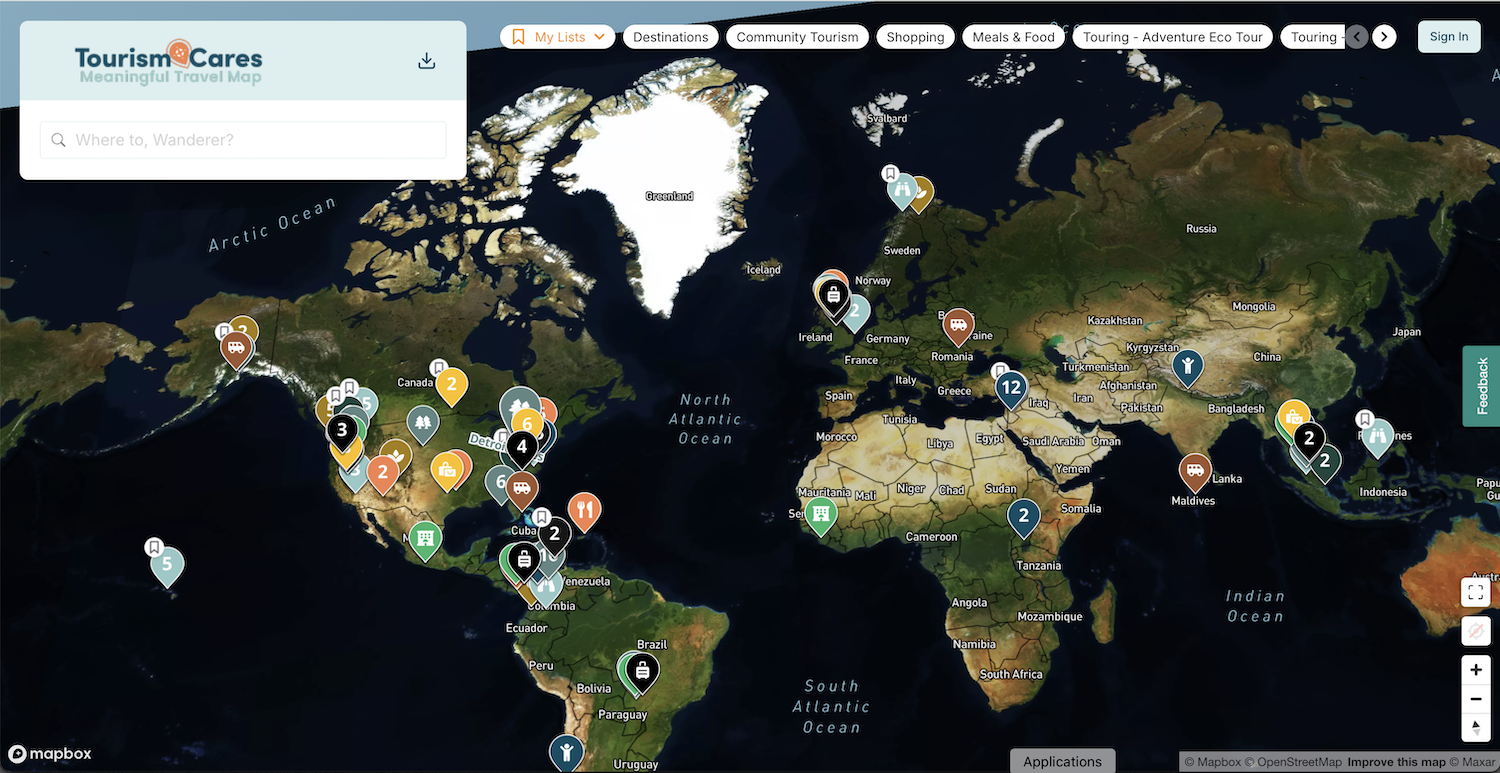Travel
Tourism Cares is Putting Sustainable Travel Experiences on the Map

Just 10 percent of tourist destinations host up to 80 percent of visitors, according to a report by the consulting firm McKinsey & Co. Such overtourism is at the heart of recent backlash directed at the industry. But one nonprofit hopes to encourage industry insiders to promote a more sustainable approach to travel.
Tourism Cares is a business-to-business organization focused on “Inspiring the travel industry to put people and places first.” In order to do so, it developed the virtual Meaningful Travel Map, which features sustainable travel experiences, accommodations and shopping that benefit the local communities.
The consequences of overtourism
Too many visitors crammed into a few popular destinations creates a host of complications. There’s environmental degradation from land being cleared to build resorts, hotels, attractions and roads. Natural and heritage sites suffer from erosion, pollution, and wear and tear as visitors trample through en masse. Cities and small towns quickly become crowded and congested, with infrastructure unable to sustain the surge of tourists. Locals are forced off of beaches and other lands as they’re privatized. And the rise in short term rentals means fewer homes available for those who live in the community.
“You’re seeing a lot of communities being overrun and inundated,” Paula Vlamings, the chief impact officer for Tourism Cares, told TriplePundit. “It’s not great for the traveler, and it’s not great for the community, either.”
This issue led to backlash in places like Barcelona, where locals marched in the streets and sprayed tourists with water guns. And Hallstatt, Austria, where community members blocked the tunnel leading to the small, lakeside village in protest of the 10,000 tourists descending upon them daily.
Ensuring spending actually benefits local communities
While tourism of this scale does bring a lot of spending, very little of that money stays in local communities. That’s where sustainable tourism can make a huge difference. Not only does it protect the quality of life at a given destination, it allows locals to benefit from the influx of cash.
“It’s much better for the community because of this concept of leakage, where a lot of money leaves the local community,” Vlamings said. “That’s where we really want to say go local, local restaurants and impact organizations. Figure out a way to shift [travelers] from the hotel that doesn’t have a sustainability strategy at all to one that does, and see how that can change the carbon footprint of what you’re doing. And your travelers feel like they’re part of the solution instead of part of the problem.”
Being a part of the solution doesn’t have to be all or nothing, she said. Travelers can make a difference one experience at a time.
“If you look to integrate just one experience from the map into that itinerary then you can kind of grow from there,” Vlamings said.
Getting on the Meaningful Travel Map
Organizations have to be vetted before they can be included on the Meaningful Travel Map, ensuring that they meet sustainability criteria. This includes animal welfare standards, child safety guidelines, hiring local guides, and positively impacting the local community — preferably by working with underrepresented or marginalized groups. The map accepts social enterprises, nonprofits, and community-based tourism cooperatives but not big businesses that are already flourishing, Vlamings said.
“We really look to support those kinds of community-driven, community-led, grassroots organizations,” she said. To make it on the map, they must focus on sustainability and regenerative principles, DEI (diversity, equity and inclusion), or protection and preservation of cultural heritage, biodiversity or natural resources.
One featured organization is Café Reconcile, a training kitchen focused on victims of youth violence in New Orleans. Located outside of the city’s main French Quarter, it takes tourists off the beaten path for a delicious meal and immersion into the local culture, while learning about the organization’s community impact, Vlamings said.
What’s not on the map, yet
A quick look at the Meaningful Travel Map reveals an uneven distribution of pins, with vetted organizations clustered together in some areas and other regions that don’t have any. This will change as the map expands into more countries, but that takes time and staff, Vlamings said.
The map began with Jordan in 2018 and Colombia the following year. Since then, partnerships ramped up, and there are currently about 350 organizations featured.
“We tripled the number of destination partners, so the scale is happening,” Vlamings said. “It’s a big, huge world, but we definitely have plans to have representation in all of the communities that we don’t have any pins in yet.”

The map helps travel professionals develop more sustainable itineraries, but what about travelers who are visiting destinations that aren’t represented? Vlamings suggests that tourists or their travel providers do a little research into what local nonprofits and social enterprises are doing.
“There’s actually a fair amount of consumer-facing companies and apps and websites that are sourcing sustainable [travel] products,” she said. “What you’re looking for is anything on their website that talks about sustainability. Are they hiring local guides? What is their stance on plastics? Do they have an animal welfare policy?”
Working together towards sustainability
Consumers are increasingly expressing a desire to make their travel more sustainable, and Vlamings said she is confident that the industry is responding to their wishes.
“That’s where we’re really hoping to work with our tour operators to say, ‘Okay, start building this,’” she said. “Just start building your itineraries and your businesses and all of your supply chain more sustainably. And then the traveler can experience that just by going on a trip with you … We’re hoping that impacts the entire industry, because I think one thing we all forget is … every one of these companies sells the exact same place … so it’s in their benefit to work with their competitors around sustainability.”









